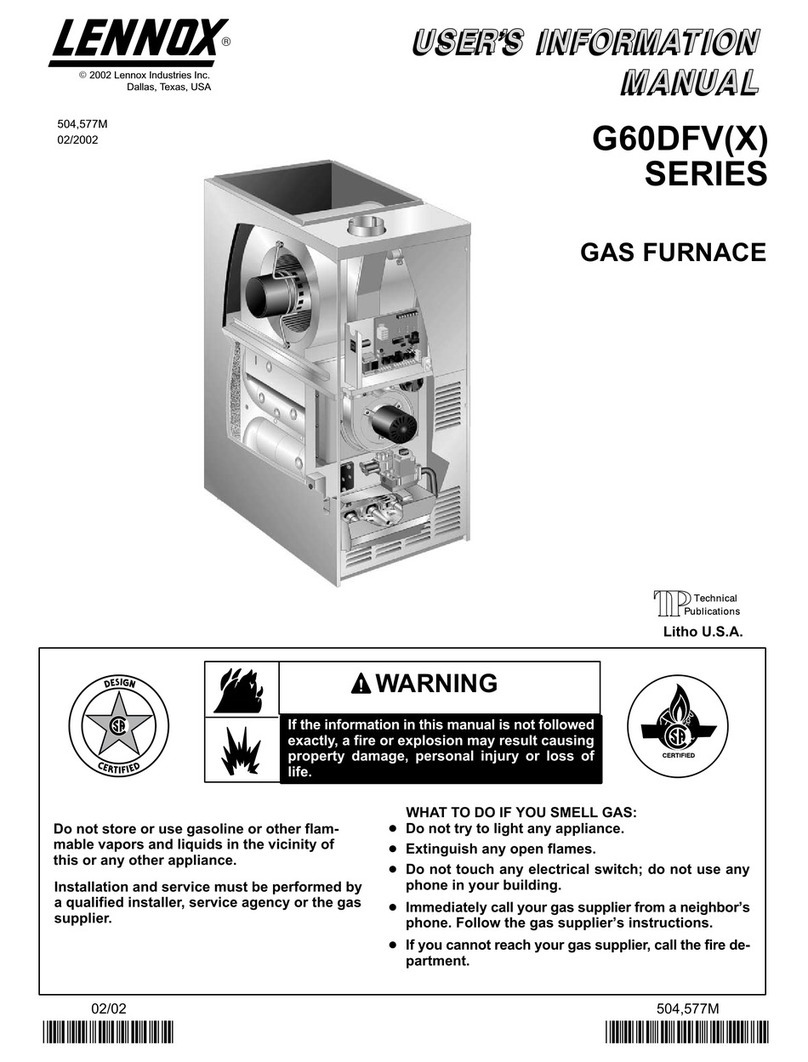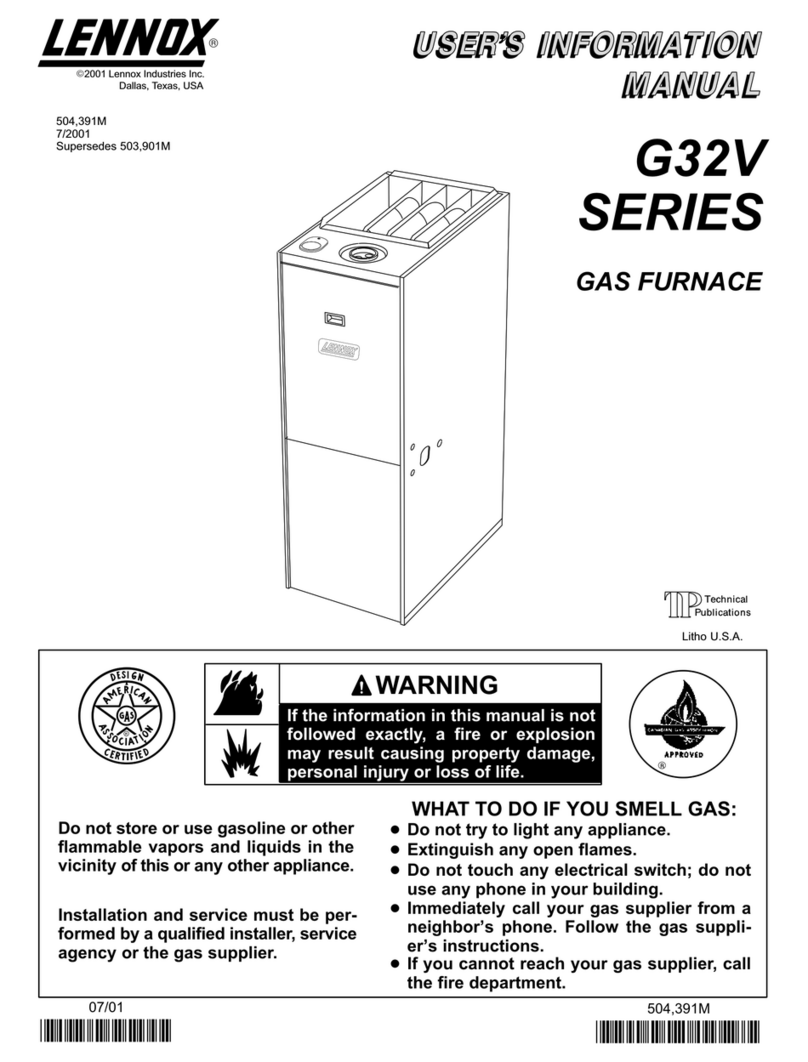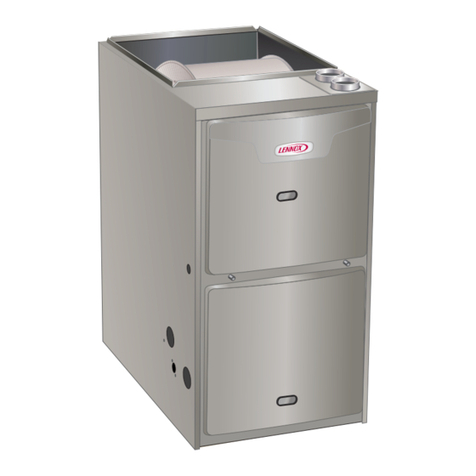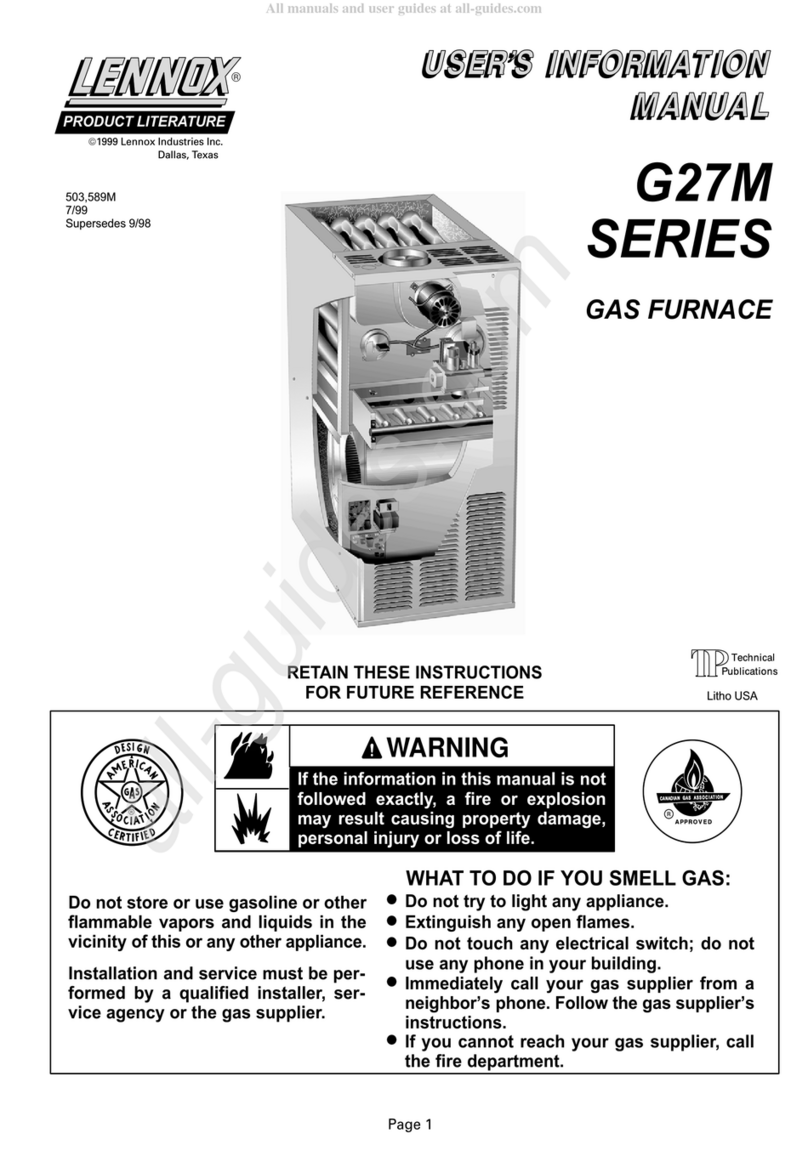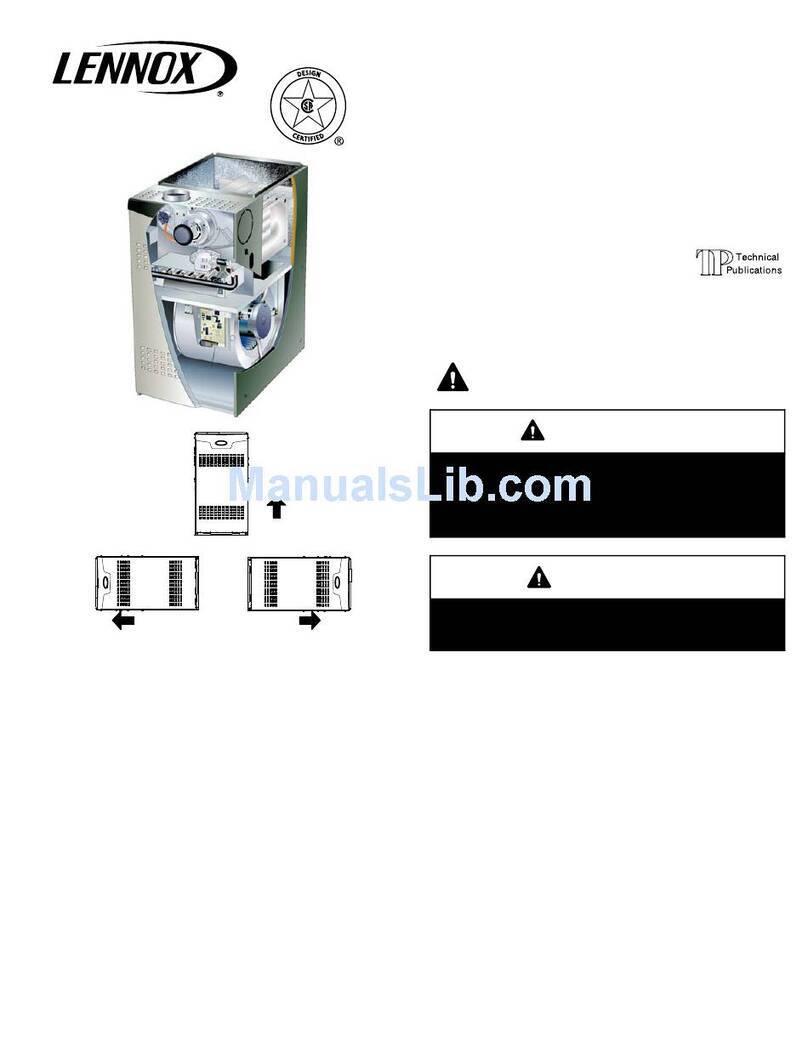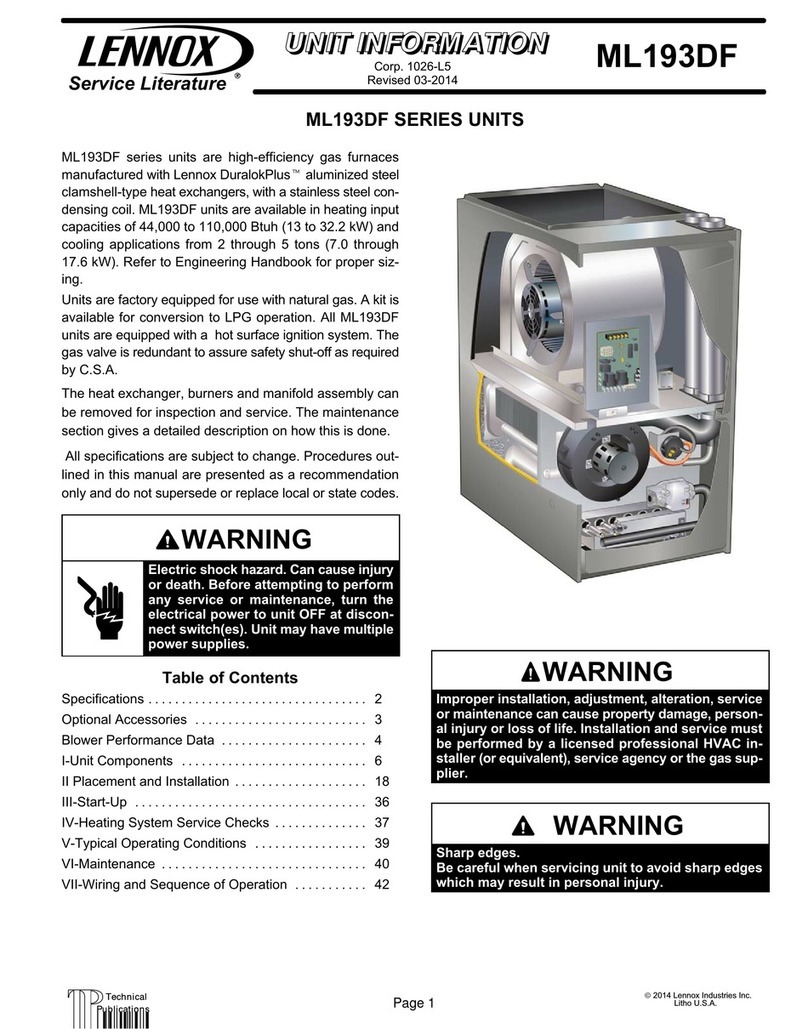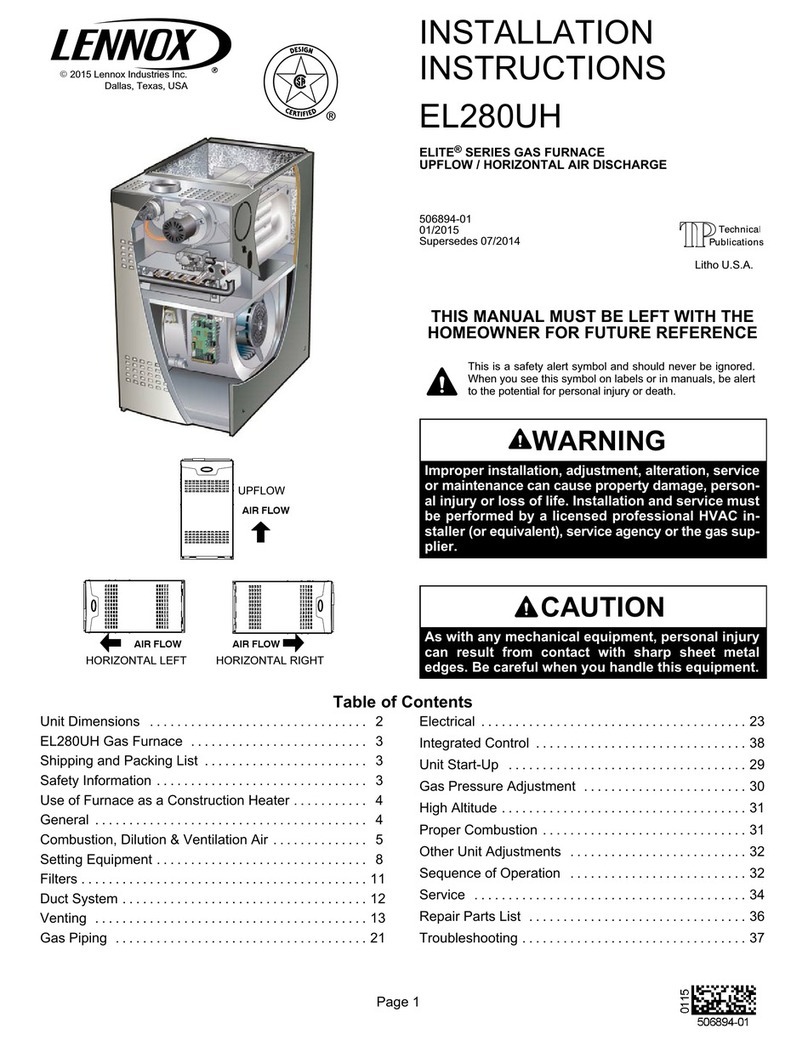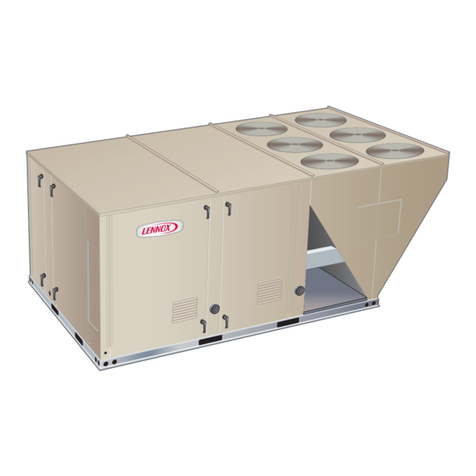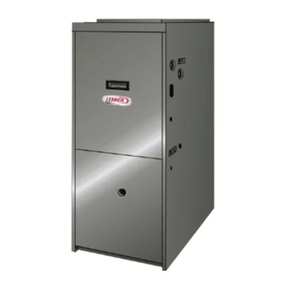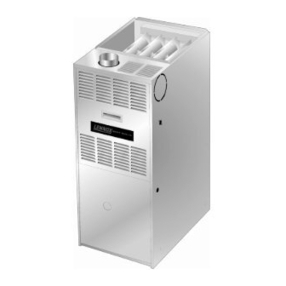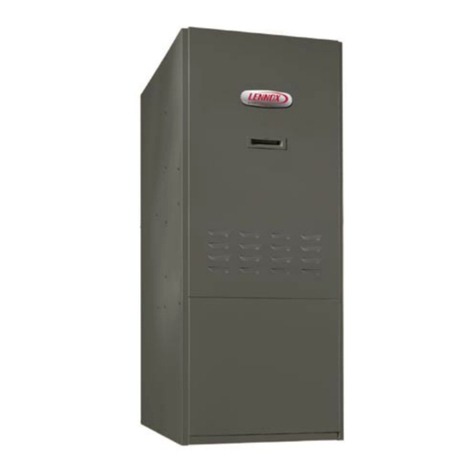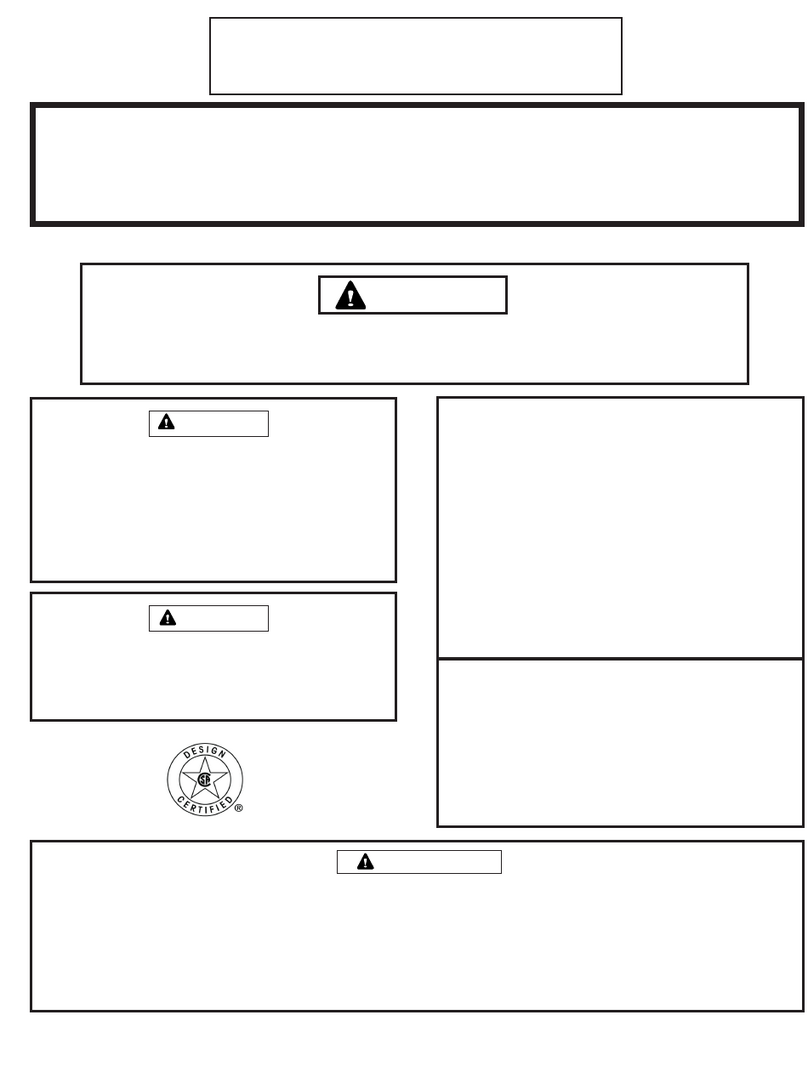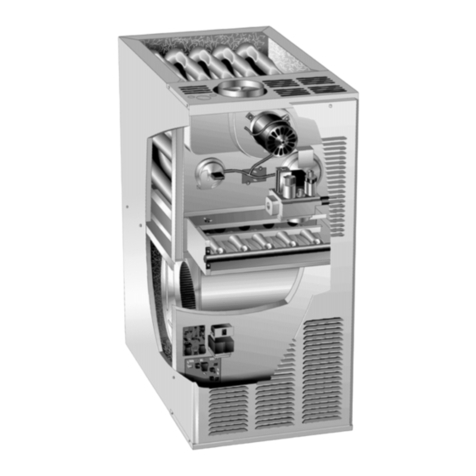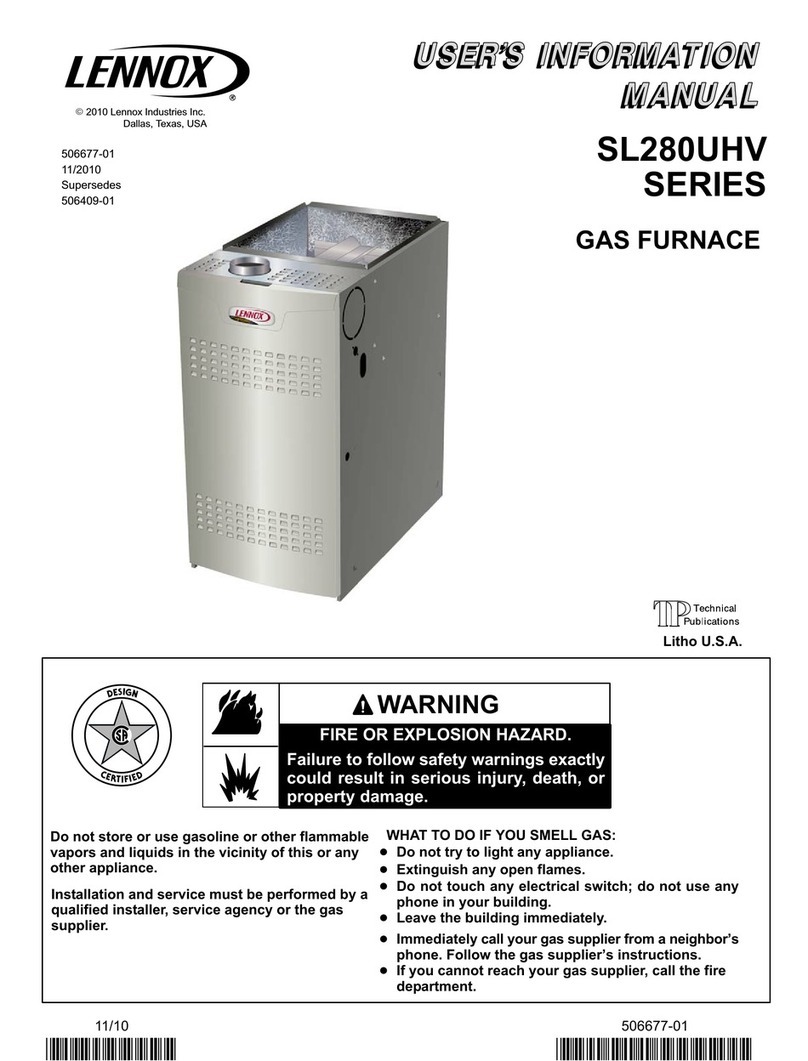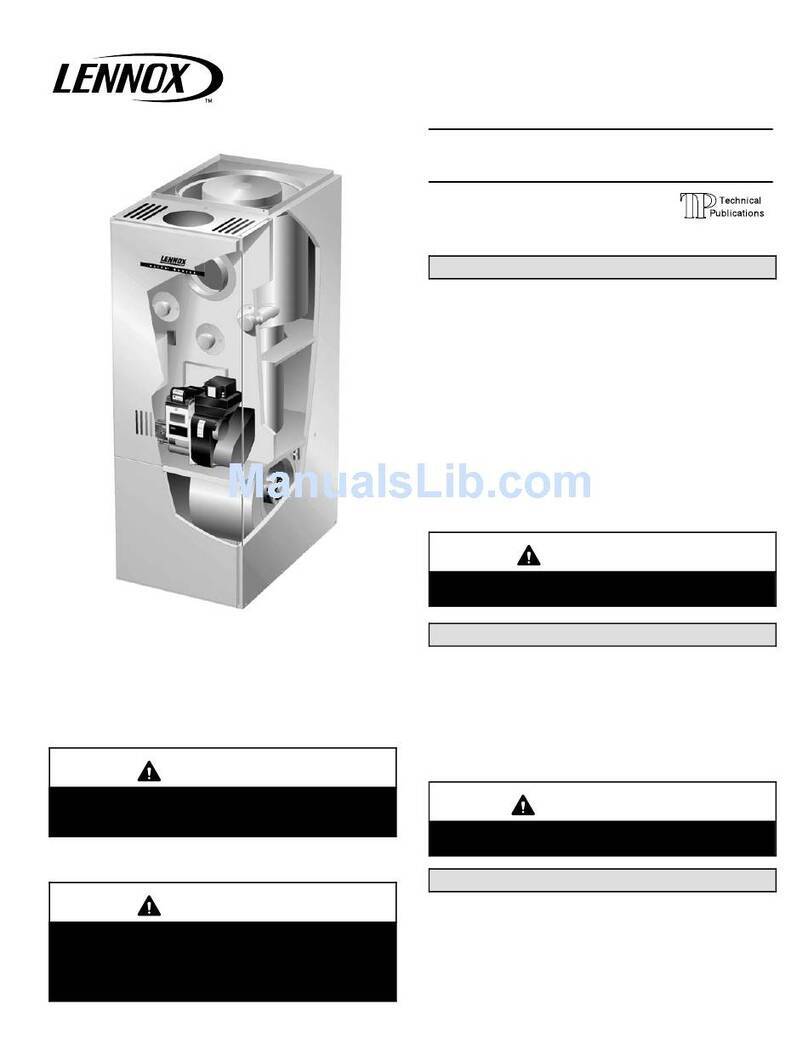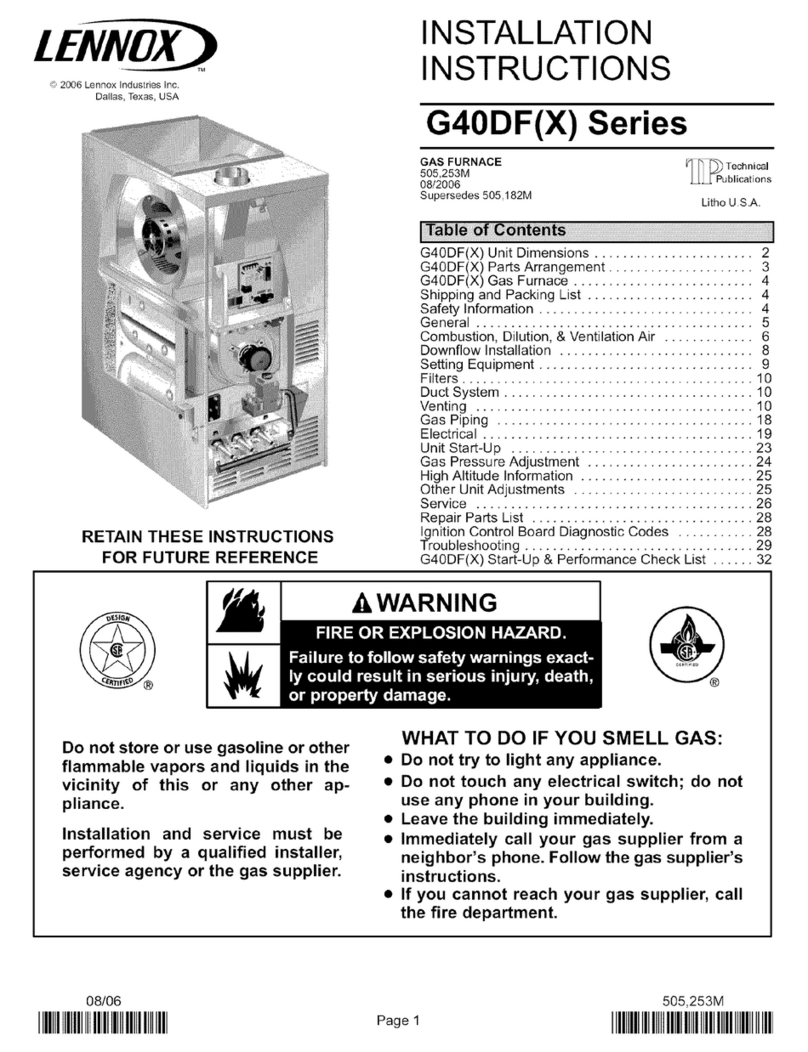3- Close all building doors and windows and all doors be-
tween the space in which the appliances remaining
connected to the common venting system are located
and other spaces of the building.Turn on clothes dry-
ers and any appliances notconnected tothe common
venting system. Turn on any exhaust fans, such as
range hoods and bathroom exhausts, so they willop-
erate at maximum speed. Do not operate a summer
exhaust fan. Close fireplace dampers.
4 - Follow the lightinginstruction.Place the appliance be-
ing inspected in operation. Adjust thermostat so ap-
pliance will operate continuously.
5 - Test for spillageat the draft hood relief opening after 5
minutes of main burner operation. Use the flame of a
match or candle, or smokefl'om a cigarette, or a cigar.
6- After you have determined that each appliance re-
maining connected to the common venting system
properly vents when tested as outlined above, return
doom, windows, exhaust fans, fireplace dampers and
any other gas-burning applianceto their previouscon-
dition of use.
7- If improper venting is observed during any of the
above tests, the commonventing system mustbe cor-
rected. The common venting system should be re-
sized to approach the minimum size as determined by
using the appropriate tables in appendix G in the cur-
rent standards of the National Fuel Gas Code ANSI
Z223-1 in the U.S.A., and the appropdate Category 1
Natural Gas and Propane appliances venting sizing
tables in the current standards of the CAN/
CGA-B149.1 and .2 in the Natural Gas and Propane
Installation Code in Canada.
Intake and Exhaust Piping Terminations
Intake and exhaust pipes may be routed either horizontally
through an outside wall or vertically through the roof. In at-
tic or closet installations, vertical termination through the
roof is preferred. Figures 8 through 20 show typical ter-
minations.
1-Use recommended piping materials for both intake
and exhaust piping.
2 - Secure all joints, including drain leg, gas tight using
approved cement.
3-Piping diameters should be determined according to
length of pipe run. See table 4. Locate intake piping
upwind (prevailingwind) from exhaust piping.To avoid
re-circulation ofexhaust gas on roofterminations, end
of exhaust pipe must be higher than intake pipe.
Exhaust and intake exits must be in same pressure
zone. Do not exit one through the roofand one on the
side. Also, do not exit the intake on one side and the
exhaust on another side of the house or structure.
4-
5-
Intake and exhaust pipes should be placed as close
together as possible at termination end (refer to il-
lustrations). Maximum separation is 3 inches (76mm) ,-
on roof terminations and 6 inches (152mm) on side
wall terminations.
Exhaust piping must terminate straight out or up as
shown. In rooftop applications, a 2 inch X 1-1/2 inch re-
ducer for 2 inch venting, 3 inch x 2 inch reducer for 3
inch venting must be used on the exhaust piping at the
point where it exits the structure to improve the velocity
of exhaust away from the intake piping.
On roof terminations, the intake piping should termi-
nate straight down using two 90° elbows (See figure 8).
A IMPORTANT
NOTE -If winter design temperature is below 32°F (O°C),
exhaust piping must be insulated with 1/2 inch (13mm),
Armaflex or equivalent when run through unheated
apace. Do not leave any surface area of exhaust pipe
open to out-side air; exterior exhaust pipe must be insu-
lated with I/2 inch (13mm) Armaflex or equivalent. In ex-
treme cold climate areas, 3/4 inch (19mm) Armaflex or
equivalent is recommended. Insulation on outside runs oi
exhaust pipe must be painted or wrapped to protect in-
sulation from deterioration.
Inches(mm) 3(76 MAX.__ 3 x 2 (76 x 51) OR
_2 x 1-1/2 (51 x38)
/PVC REDUCER
8 (203I MIN 1/2 (13) FOAM
INSULATION IN
UNCONDITIONED
12 (305) ABOVE SPACE
AVE"*OESNOW
ACCUMULATION
3 (76) OR UNCONDITIONED
2 (51) PVC ATTIC SPACE
PROVIDE SUPPORT
FOR INTAKE AND
EXHAUST LINES
ROOF TERMINATION KIT
(15F75) LB-49107CC for 2 (51) Venting
(44J41) LB-65678A for 3 (76) Venting
FIGURE 8
NOTE -Dudng extremely cold temperatures, belov_
approximately 20°F (6.67°C), units with long runs of venl
pipe through unconditioned space, even when insulated,
may form ice in the exhaust termination that prevents the
Page 10
